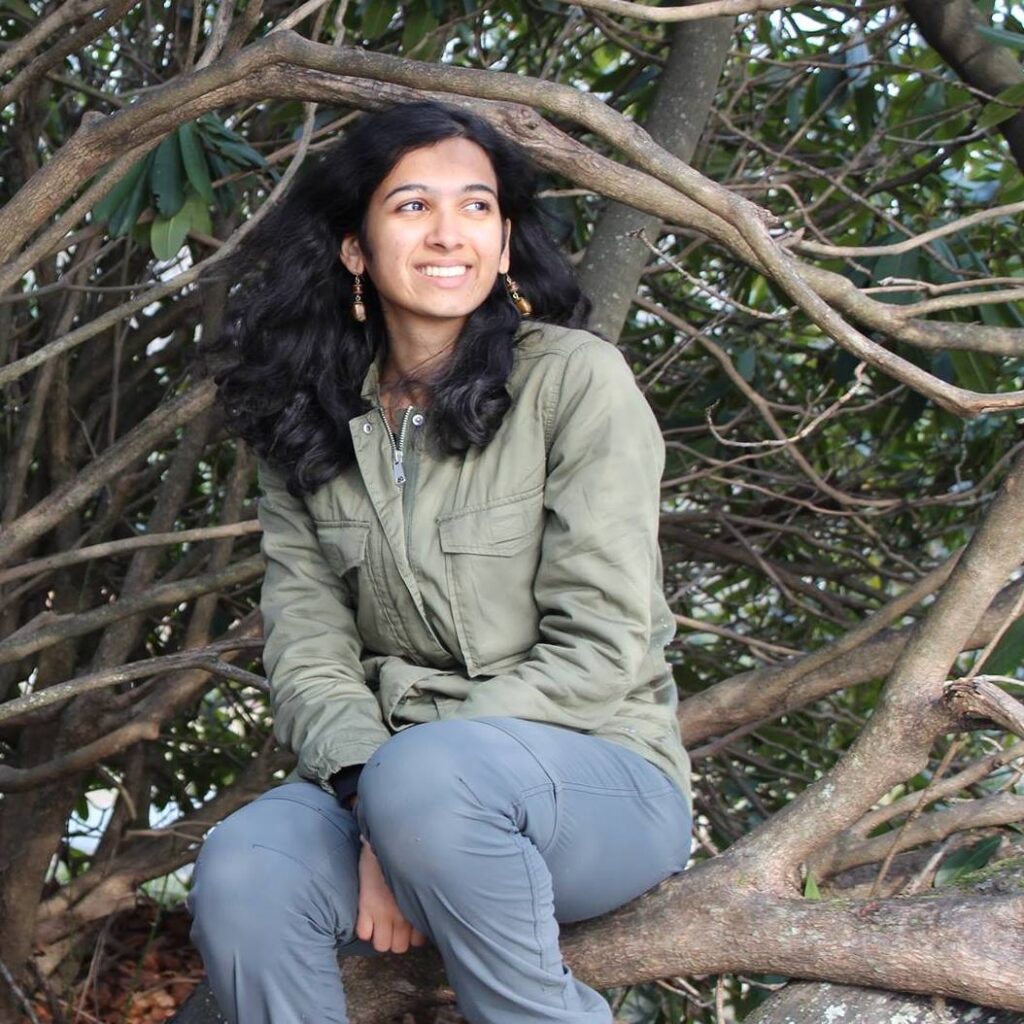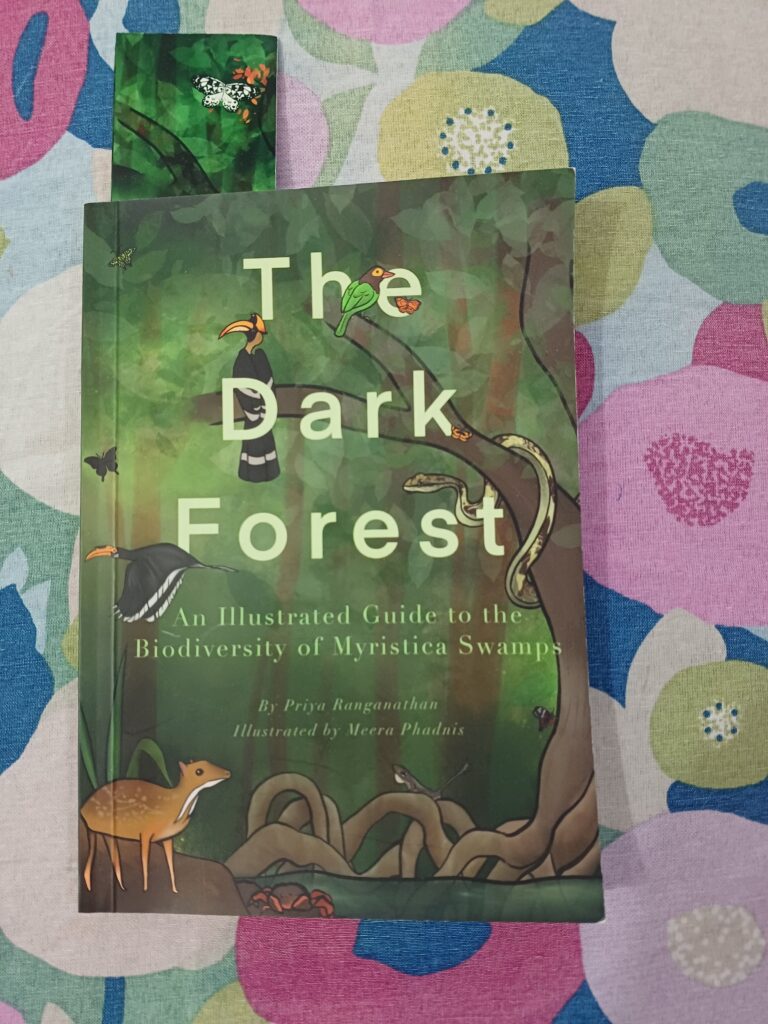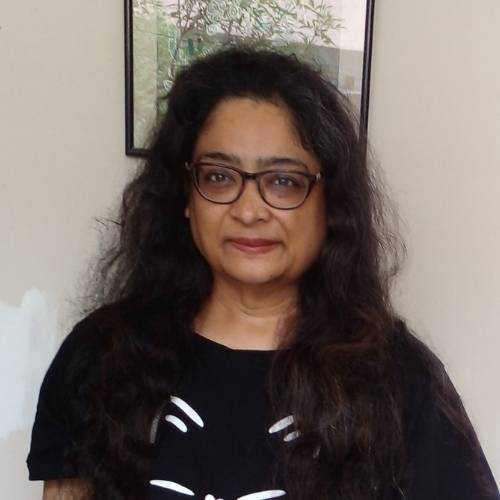Unauthorized use of any site content—including altered versions of images or text—is strictly prohibited and may result in legal action.
Unauthorized use of any site content—including altered versions of images or text—is strictly prohibited and may result in legal action.
I was always interested in wildlife and nature, thanks to the early influences of my mother, and from our home in Goregaon, Mumbai, I could easily access the world’s largest urban forest – Sanjay Gandhi National Park – and watch the transformation of its surrounding forested landscape into a concrete jungle over the years. This was one of the motivations for me to pursue a career in wildlife ecology and conservation, and I began working in tiger reserves of the Western Ghats immediately after finishing my Masters in Environmental Management (Ecosystem Science and Conservation) at Duke University. My early fieldwork in Nagarahole TR, Bandipur TR, and BR Hills made me fall in love with the varied forest types and wildlife of the Western Ghats. Spending all day in the moist deciduous forests of these tiger reserves, interacting with communities living within the buffer zone, and spotting wildlife on daily work trips made me realise how diverse and unique our biodiversity is, and how important it is to work towards conserving it in our own small ways.
I think awareness about the importance of biodiversity conservation has definitely increased, both from a funding perspective and from the number of individuals and organizations working towards this goal. However, I think the pressures on biodiversity have also increased, and often at a higher rate than awareness and conservation success stories, which has led to our current overall decline in biodiversity. While our Protected Area system in India goes a long way towards protecting forest tracts and wildlife, it is important to also protect connectivity between these patches and between ecosystems, i.e. waterbodies, grasslands, and wetland systems.
My doctoral research centres around the world of Myristica swamps, and the more time I spend in these wetlands, interacting with the people living around them and learning about the pressures of land use change and climate change on them, the more strongly I feel that we need more awareness about such lesser-known ecosystems that house high levels of endemic and endangered species but are often forgotten in discourses about important ecosystems of the nation. During my fieldwork, I spend a lot of time observing the biodiversity of swamps, from the trees that are adapted to life in flooded forests to the tiny frogs, butterflies, damselflies, and birds that add dashes of colour to the hues of green and blue. I wanted to make people care about these delicate, fading wetlands, and the best way to do so is to inspire awe and amazement at the sheer diversity of life found here. I thought that an illustrated book would better touch peoples’ emotions and bring about a connection to the landscape than adding photographs like many other field guides do, and I tried to use a lyrical form of prose to tell the story of swamps and their biodiversity.
Meera is my younger cousin and a talented young artist and university student. I wanted to encourage her passion for art and when she sent me samples of her art style, I immediately knew it would be ideal for bringing out a magical realism element to the illustrations while remaining true to the species’ morphology and form. Meera primarily uses digital art, which was a form I was not sure about before we began working on this book, but now I have a lot of admiration for the level of detail that this art medium allows the artist to extract from the subject.
This book has been a labour of love for nearly two years, when I first wrote a grant to write a book on swamps as part of my outreach work in the landscape. Meera and I began planning the illustrations in 2023 December, but it wasn’t until late 2024 that the work really took off with regards to revising illustrations, double checking species’ information, and putting together the different sections of the book. The book was finally published in 2025 March.
For starters, we need to strengthen landscape-level conservation planning. This involves moving beyond isolated protected areas to connect forest fragments through corridors and buffer zones. We also need to implement ecoregional planning that accounts for the ecological needs of wide-ranging species, watershed integrity, and climate resilience. Another important step is involving local knowledge and community stewardship. Gatekeeping conservation has never been successful in the long-term. If we incorporate traditional ecological knowledge into restoration and monitoring programs, especially in sacred groves, swamps, and agroforestry systems, we can make long-standing conservation impacts in the Western Ghats.
Additionally, we need to prioritize the restoration of threatened ecosystems such as Myristica swamps, montane grasslands, and riparian zones. We must support reforestation with native species to rebuild ecological function and biodiversity. Alongside this, increasing the enforcement capacity of the Forest Department and local governing bodies to combat illegal activities like poaching and logging in forested regions will go a long way. Violations need appropriate consequences to dissuade law breakers.
Finally, we cannot forget to account for climate change. We need to set up long-term ecological monitoring networks to track the effects of climate change on species distributions, phenology, and ecosystem services. Using these insights, we can adapt conservation strategies and identify climate refugia for vulnerable species across the Western Ghats and other biodiverse regions.
Yes, it really does take a village to make impacts or conduct research in this field! I am a doctoral student at the Ashoka Trust for Research in Ecology and the Environment (ATREE), based in Bengaluru, and my PhD guides Dr. G. Ravikanth (ATREE) and Dr. Jagdish Krishnaswamy (Indian Institute for Human Settlements) have been instrumental in shaping my research and helping me grow as a researcher and student. I have also received a lot of help from the Forestry College of Sirsi, my local partnering institute near the Myristica swamps where I work, especially from the dean Dr. R. Vasudeva, who has helped me throughout the years, and Dr. Jagadish M.R., who is on my advisory committee. I also must thank the many students from the Forestry College who accompanied me to the field and translated surveys for me along the way, as I am not a native Kannada speaker. The Karnataka Forest Department, especially the CCF Kanara Circle Dr. Vasant Reddy IFS, has been extremely supportive of my work, accompanying me to swamps, telling me about the historical management of the landscape, and paving my way with permission to conduct research. And lastly, the grants that I have received that supported my stipend and fieldwork – many thanks to the Prakriti Research Fellowship by CARPE-Ecosattva, Rubrik Inc, and the Society of Wetland Scientists for all their support. My work would not be possible without all of these wonderful individuals and organisations.
There are always challenges that accompany working in a new landscape. Starting off, I was extremely poor at Kannada, and I had to interact a lot with local communities and conduct social surveys to document traditional ecological knowledge. This made me need assistants to conduct my research. Additionally, as a woman in field ecology, I was often put in uncomfortable situations by men around me in the field, which made me need a male assistant to accompany me in fieldwork. This had a mental toll on me, and is something most women in research face, which is extremely disheartening and a major impediment to conducting long-term field research. I was constantly having to find new research assistants, spend extra time forging connections and building a safety net, and I always had to let someone know where I was just to remain on the safe side.
To all the people passionate about wildlife and nature – go out there and try to make a difference in your own small part of the world. Change begins at home, and it begins at a small scale. Don’t think about the long-term impacts of your work but try to form a network of protection for nature in your own area, within your own circle. To the girls out there, don’t give up even when everyone tries to dissuade you from going out into the field and conducting research. You are just as capable as your male counterparts, and we need more girls in science and wildlife research. Don’t be intimidated or afraid to make your voice heard. You matter, and your contributions matter.
I am a huge Ruskin Bond fan, and his books were my formative reading material before I took up a career in wildlife conservation. Some of my favourites are Rain in the Mountains and Unhurried Tales. I also recommend the work of Gerald Durrell (My Family and Other Animals), Janaki Lenin (My Husband and Other Animals), and M. Krishnan’s short stories on wildlife. For younger readers, I always recommend Deepak Dalal’s Vikram Aditya Adventure series. The books in this series are focused around two boys solving mysteries surrounding wildlife and national parks of India. I enjoyed The Water Catchers by Bhairavi Parekh and many picture books on wildlife that one can find for free on Storyweaver by Pratham Books! I also want to quickly pitch my children’s e-magazine Youth For Nature (https://yfnmagazine.wordpress.com/) for young readers and novices into the world of wildlife of India for stories and informative articles about Indian wildlife and ecosystems.


Priya’s website – https://onlifeandwildlife.com/the-dark-forest-an-illustrated-guide-to-myristica-swamps/
Review copy sent to me by Priya.
Like this post

I’m Aishwariya. I’m passionate about writing, reading, marketing communications, books, blogging, poetry and editing. I’ve donned several hats, such as freelance journalist, copywriter, blogger and editor.
I have a newsletter on SUBSTACK. Do subscribe to receive news on books and all things literary.

I have been recognized as one of the top book reviewers in India by the Zorba Books! It is an incredible honor to be acknowledged this way.
Read full article here

I have been recognized as one of the top book bloggers in India by The Himalayan Writing Retreat! It is an incredible honor to be acknowledged this way.
Read full article here


2 Responses
An eye opening Interview on conservation of ecology and the challenges faced by women in the field… Looking forward for more girls to research more as their contribution means a lot…. I picked this message.
Thanks, Amru for reading the interview and your observations. Yes, Amru, I agree with the message, which Priya has highlighted. In most fields, women face so many challenges. I wish we could all overcome our challenges and get ahead.